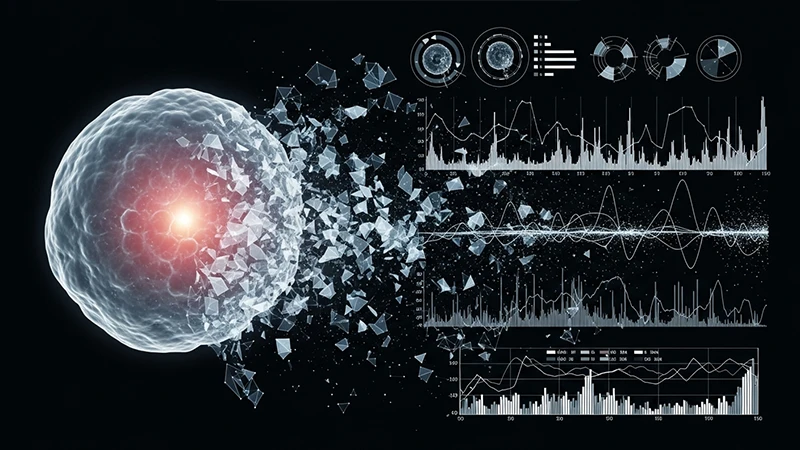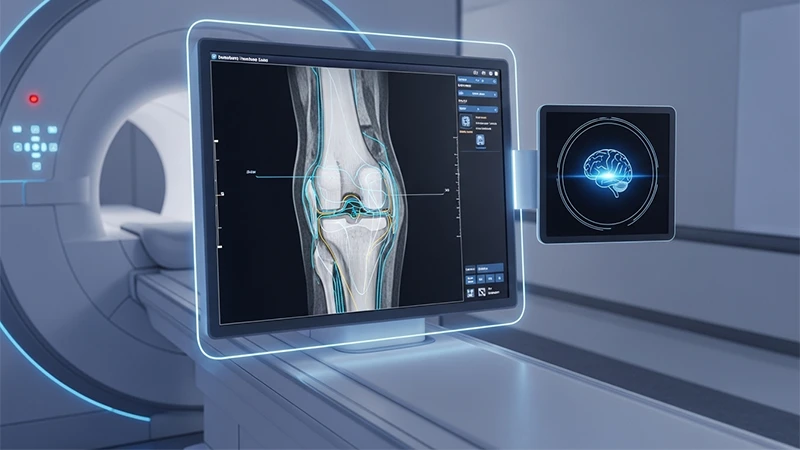The Future of AI in Radiology: What to Expect in the Next 5 Years
The first wave of Artificial Intelligence in radiology has focused on "seeing"—detecting and highlighting abnormalities. The next wave will focus on "understanding" and "predicting." As AI models become more sophisticated and integrated into clinical workflows, we can expect to see them take on more complex tasks that will fundamentally enhance the power of medical imaging. Here’s a look at what to expect in the near future.
1. Predictive Analytics and "Radiomics"
Radiomics is an exciting field where AI algorithms are trained to extract a vast amount of quantitative data from medical images—features that are often invisible to the human eye. This data can then be used to make predictions about a patient's disease.
- Predicting Treatment Response: An AI could analyze the texture and shape characteristics of a tumor on a pre-treatment CT scan to predict how likely it is to respond to a specific type of chemotherapy.
- Prognosis Prediction: By analyzing a brain MRI, an algorithm might be able to predict the future course of a disease like multiple sclerosis or identify patients at high risk for developing Alzheimer's disease.
This moves imaging from a purely diagnostic tool to a prognostic one, playing a key role in personalized medicine.

2. Automated Report Generation
Report writing is a time-consuming but essential part of a radiologist's job. The next generation of AI will be able to automate much of this process.
- Structured Reporting: After analyzing an image, an AI could automatically populate a structured report with all the normal findings and measurements (e.g., "The liver measures X cm and is unremarkable in appearance.").
- Impression Assistance: For positive findings, the AI could generate a preliminary impression based on the abnormalities it detected, which the radiologist would then review, edit, and finalize.
This would dramatically reduce turnaround times and free up radiologists to focus on the most complex aspects of the diagnosis.
3. AI-Driven Image Acquisition
The role of AI is expanding beyond image analysis and into image creation. AI will help technologists acquire better images faster and with lower doses of radiation.
- Intelligent Scan Planning: An AI could automatically plan the slices for a complex MRI of the brain or knee, ensuring the perfect orientation every time, reducing scan time and improving consistency.
- Accelerated MRI: Deep learning is being used to reconstruct high-quality MRI images from far less data. This could reduce MRI scan times from 30 minutes to under 10 minutes, a massive benefit for patients and hospitals.
- Synthetic Imaging: In the future, it may be possible to use AI to generate certain types of images from others. For example, an AI might be able to create a contrast-enhanced CT image from a non-contrast scan, potentially avoiding the need for an IV contrast injection in some patients.

4. Integration and "Platform" Solutions
Currently, many AI tools are standalone applications. In the future, we will see them deeply integrated into the core platforms that radiologists and technologists use every day, like the PACS.
Instead of running a separate AI app, the analysis will happen seamlessly in the background. A radiologist will open a study, and the AI's findings, measurements, and predictions will already be there, embedded directly into their normal viewing software, creating a truly augmented workflow.
Conclusion: A More Powerful and Personalized Future
The future of AI in radiology is not about replacing the human element but about supercharging it. Over the next five years, AI will evolve from a simple detection tool to a comprehensive assistant that helps predict disease, automate reporting, and optimize the very creation of images. This evolution promises to make radiology not only more efficient but also more precise, personalized, and integral to patient care than ever before.


Comments